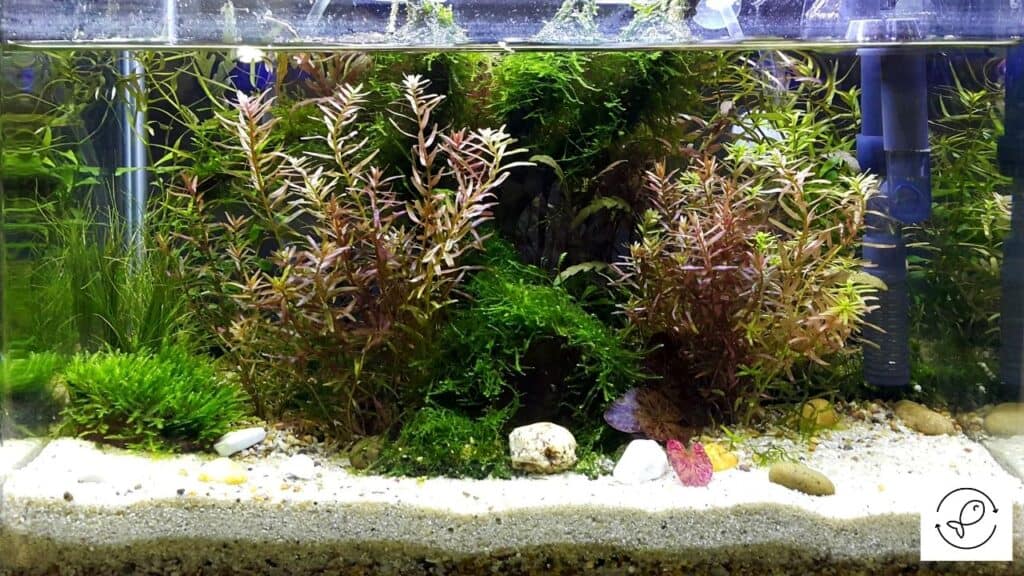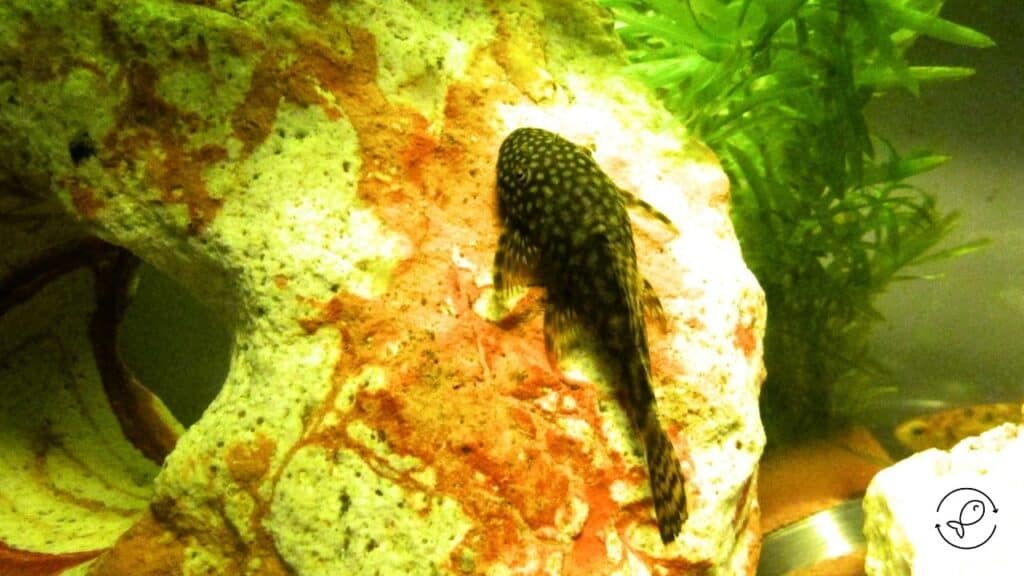Plecos change color and blend with their surroundings to avoid predation in the wild. In captivity, they change or lose their color due to unfavorable living conditions, like poor water quality, food scarcity, stress, or aggressive tankmates. Plecos’ color also fades while they’re asleep.
There is a lot more to this color-changing behavior of plecos. So let’s learn about this in more detail.
Why Do Plecos Change Color?
Some pleco species like bristlenose and butterfly plecos can change color.
Like chameleons, butterfly plecos can change color to blend into their surroundings.
When kept in captivity, butterfly plecos can change their color to match the color of the substrate in the aquarium.
In the wild, plecos change color primarily to hide from predators or regulate their body temperature.
The other reason for color change is mood.
Plecos can change or fade their color depending on their mood. Their color also fades when they’re asleep.
While changing colors in the wild is common, it can be a concern in an aquarium.
Since there is no fear of predation in captivity, color change can signify distress or sickness.
Why Do Plecos Lose Color?
Plecos losing their color isn’t a healthy sign, especially for plecos in an aquarium.
It indicates that the living conditions aren’t suitable for them to thrive.
You can notice specific symptoms in plecos as they lose their colors, such as abnormal swimming, appetite loss, and red lesions on the body.
Given below are the most prominent reasons for plecos to lose color.
Poor Nutrition
Nutrition plays a vital role in maintaining the health of your pleco. A healthy pleco has shiny skin and bright colors.
However, its color can become dull if it doesn’t receive enough nutrition.
Many aquarists also feel that algae are sufficient for plecos.
However, plecos feeding on only algae without any other food can eventually lose their color.
Algae alone can’t provide all the nutrients that plecos need.
Some pleco species are omnivores and can’t survive on algae alone, while others are carnivores that don’t eat algae at all.
So it’s best to feed plecos as per their dietary requirements.
Food such as live or frozen food, vegetables, fruits, flakes, algae wafers, and sinking pellets are suitable for retaining their colors.
Poor Water Quality
Water quality is vital for plecos to thrive. Poor water quality leads to poor growth rates and low immunity, leading to stress.
A stressed pleco is more likely to lose color.
Fading of the color is also an indication that the water parameters aren’t in the desired range.
You should immediately check the water parameters such as water temperature, pH, and hardness level.
Testing the water regularly with a water test kit is recommended to maintain the water quality.
Food Scarcity
Food scarcity is one of the significant reasons for plecos to lose color.
Plecos need a well-balanced nutritious diet to retain their colors.
Malnutrition can cause loss of color and appetite. The lack of nutrients will fade the pleco color.
If you notice that your pleco is losing its color, it’s recommended to feed it more nourishing food than usual.
Stress
Stress is another primary reason for plecos to lose color. Plecos are sensitive to stress.
Symptoms of stress include fading color, glass surfing, constant hiding, and loss of appetite.
Stress can occur due to various reasons such as overcrowding, poor water quality, unfavorable water parameters, aggressive tankmates, food scarcity, sudden or drastic water temperature fluctuations, illness, etc.
New Environment

If you move your pleco into a new environment, it may take some time for it to get used to the new conditions.
This condition is known as the “new environment syndrome.”
Your pleco may start getting stressed because of the new environment, which can lead to color loss.
It will recover and regain its original color once it adjusts to the new environment.
Exposure To Excessive Sunlight
Plecos are nocturnal and prefer to hide or rest during the daytime. So they usually don’t get exposed to direct sunlight.
That’s why plecos can lose color if they get exposed to excessive direct sunlight.
To avoid this problem, you should keep the tank in a place that doesn’t receive direct sunlight.
Illness
Another factor that causes plecos to lose color is an illness. Sickness can fade the color of plecos.
Certain diseases like fin rot, ich, and dropsy can turn the plecos white.
If your pleco is sick, it may show signs such as listlessness, lethargy, loss of appetite, etc.
If your pleco shows any of these symptoms, it’s vital to seek medical attention immediately.
Can Plecos Camouflage?
Yes, plecos can camouflage. Some pleco species have green color that helps them blend with their surroundings, while some plecos have a black or brown color that helps them hide in the substrate or under the rocks.
Camouflaging is a vital survival strategy for plecos in the wild to stay safe and undetected.
Plecos can camouflage and blend into their surroundings to confuse the predators.
Camouflaging also helps the plecos to sneak up on their prey.
Related Questions
Can bristlenose plecos change color?
Yes, bristlenose plecos can change color to match their surroundings.
They mainly camouflage their skin color to match their surroundings to hide from predators.
Can rubber lip plecos change color?
Rubber lip plecos can’t change color, nor can they camouflage like bristlenose plecos.
However, they can become pale and lose color if the tank conditions aren’t favorable, or they get stressed due to aggressive tankmates.
Do clown plecos change color?
Yes, clown plecos can change color. Their color change depends on several factors such as age, diet, origin, and mood.

